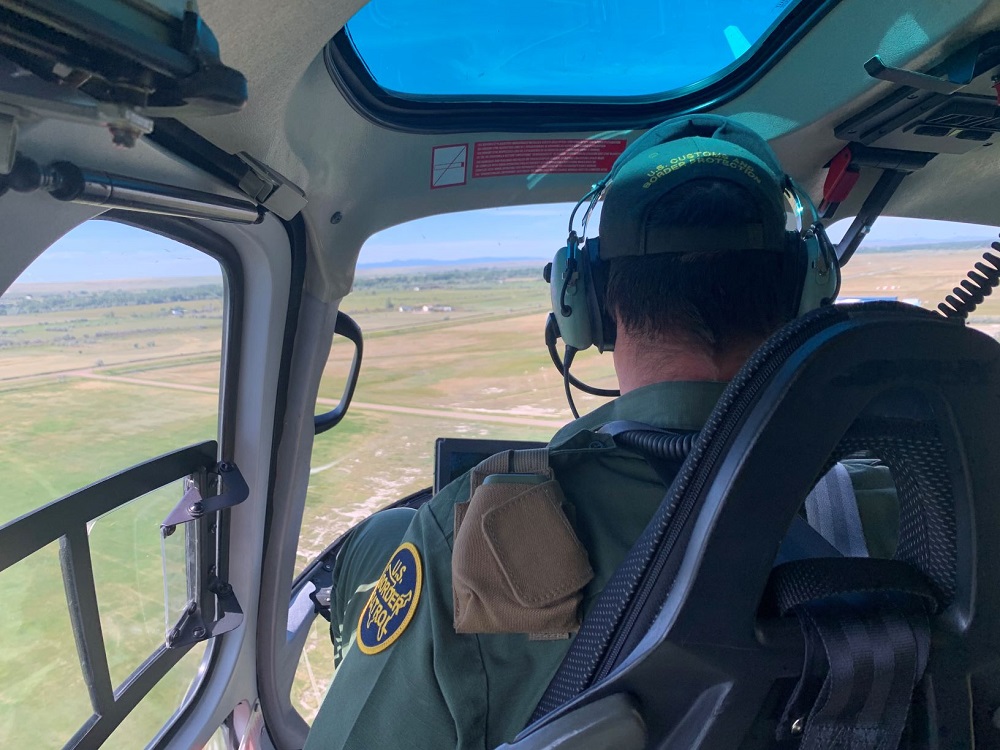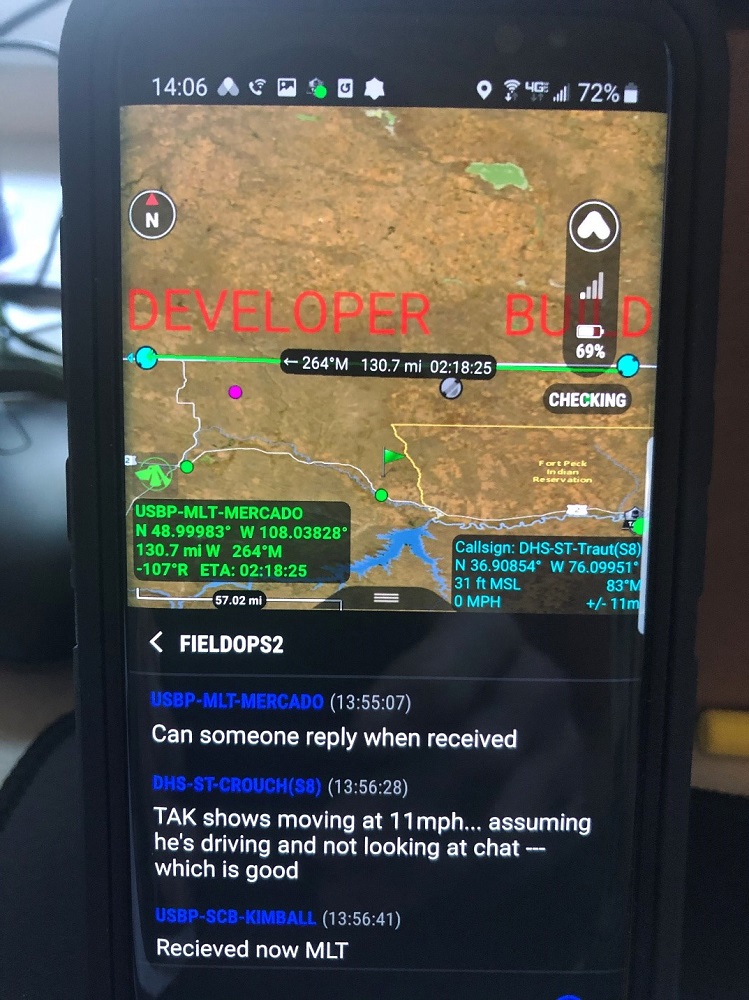
In recent years, the Department of Homeland Security (DHS) Science and Technology Directorate (S&T) has worked together with U.S. Border Patrol (USBP) to improve situational awareness at the U.S. northern border by establishing enterprise capabilities that give agents access to more data sources, decision support tools to translate the data into actionable information and intelligence, and information-sharing resources to enable collaboration with partner law enforcement agencies.
In summer 2019, as part of these ongoing efforts to address security vulnerabilities along the U.S./Canadian border, S&T and USBP conducted a field test of airborne and terrestrial tactical surveillance technologies at USBP Havre Sector in Sweetgrass, Montana. The event illustrated the potential efficacy from integration of multiple technologies to provide portable situational awareness capabilities. And this past June, they returned to Montana for a focused assessment for the performance of one such technology—Somewear’s Global Hotspot—in an extended operational evaluation. The Somewear Global Hotspot is an emerging cost-effective satellite communications (SATCOM) device. Somewear, the device vendor, was selected through S&T’s Long-Range Broad Area Announcement (LRBAA) solicitation process following a preliminary field analysis of several similar SATCOM device vendors in the market.
 “The focus of S&T’s investment is threefold. First is to add security controls into the already-available commercial product so that it can be approved for transmitting and receiving official DHS data,” said S&T Program Manager Shawn McDonald.
“The focus of S&T’s investment is threefold. First is to add security controls into the already-available commercial product so that it can be approved for transmitting and receiving official DHS data,” said S&T Program Manager Shawn McDonald.
“Second is to integrate the device into existing DHS tactical situational awareness systems to provide communications coverage in disparate locations where many of our agents, officers and operators execute their missions every day. And lastly, we included an extensive field test effort to collect real user feedback on performance, user interface and general utility across six very diverse operational environments.”
The Global Hotspot is being evaluated as a solution to enable low bit-rate data, specifically chat messages and location data, to be sent where no cellular and/or land mobile radio (LMR) coverage exists. The Android Team Awareness Kit (ATAK) app on agents’ mobile devices has a “plug-in” that allows it to securely communicate wirelessly to the SATCOM device and exchange only chat and location data, which is then transmitted across the SATCOM link. The small device can be worn on an agent’s field pack without adding much weight, and has a long battery life, a low total procurement and maintenance cost, and a low operational cost.
The evaluation showed promising results, along with positive feedback from users.
One agent captured the ease of use in a statement to S&T, “I’m probably the least technical guy here. I just plug it in, and it works.” A few weeks after the event another agent said, “I just wish more agents had this capability,” noting that the value would be stronger if she knew other agents had connectivity off grid as well.
The Global Hotspot, when paired with the ATAK device, improved officer safety, situational awareness and coordination while reducing response times. The ability to display friendly force tracks and conduct tactical chat in austere regions of Montana is a force multiplier for agents in the field.
Following the testing with S&T, USBP agents stationed in the Havre Sector on the northern border continued to field test the Global Hotspot and ATAK. Agents from Malta Station and Scobey Station, also in Montana, were also able to demonstrate a satellite communications link using the ATAK paired to a Global Hotspot. The agents’ mobile device plug-in allowed them to communicate wirelessly via the Iridium NEXT satellite constellation and exchange chat and location data. They were able to communicate and provide shared situational awareness at distances over 130 miles in areas where there was no cellular or land mobile radio coverage and facilitated shared situational awareness.
As a result of this summer’s Global Hotspot operational tests, S&T gained valuable agent feedback on device operation, software and how best to deliver the critical SATCOM capabilities to help ensure the safety and effectiveness of agents in the field in extremely remote areas. Based on the feedback provided, S&T and Somewear are making changes before launching five additional operational tests geographically spread around the United States—two more tests are coming up in Washington State and near San Diego. The purpose of selecting these locations, other than testing in their unique terrain, is to test air/land/sea communications between deployed U.S. Customs and Border Protection (CBP) units (Air and Marine Operations and USBP).
Shortly after the Havre Sector test event, the Global Hotspot device and ATAK assisted with a real-world incident: an agent’s vehicle broke down, stranding the agent in an area with no cellular or LMR coverage. Fortunately, the agent still had the test device and used it to send a chat message via SATCOM to provide his location and request help from other agents. Another agent texted back within 2 minutes that help was on the way and provided an estimated time of arrival since he could see the exact location of the disabled truck.
“In less than six months this product is showing tremendous potential to fill a communications gap across many of our DHS components, and at a price-point that allows for wide deployment,” said McDonald.
This capability and effort are making a positive impact in communities beyond DHS. Recently, the United States Air National Guard 131st Rescue Squadron successfully employed Somewear’s unique ATAK integration to coordinate and monitor a civilian rescue operation 1,200 miles off the U.S. Pacific coast. The consistent communications and situational awareness across rescue personnel, medical personnel, aircrafts, and the operations center led to an efficient rescue mission that took half of the expected time to complete.
“The two most common points of failure in critical incident environments are communications and leadership,” commented a mission participant from the 131st Rescue Squadron. “From team leaders 1,200 miles out to sea, to their troop and squadron commanders back at base, the Somewear device gave us a communication conduit through which leadership at all levels could shine through, interact, and make critical decisions at the most decisive moments. The quantifiable success was a patient getting evacuated faster and handed over to advance care sooner because complex planning and communication had already been achieved through the Somewear devices prior to the evacuation.”

